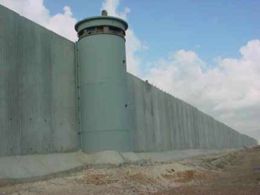Pre-outbreak history of Malton
Warning, almost everything on this page is original content, little of it is canonical, and some is disputed and/or contradictory. Please do not cite this as a factual resource in other articles.
City History
Malton was founded in early 37 A.D. by a group of displaced Welshmen and Scotsmen, driven out of their homes for reasons lost to the mists of time (though the best estimate is tribal land disputes). Driven south by their pursuers, they encountered each other in the misty hills of southwest England on the site of an even older town, and decided to settle there, protecting each other. These were the Ridleigh and Galbraith families, and the town they settled had once belonged to the Marbháin tribe, now gone. Hence began the city of Malton, and all its dark past.
Though the Maltons (as the hills were known) housed many small towns all the way up to the 19th century, the city as it is known today was not officially founded until 1820, when several small towns united in an effort to clean up their area, notorious as a slaughterhouse and crime center. The official Founding of the City of Malton was made on July 3rd, 1820, with the signing of the Ridleybank Doctrine by the mayors of the eight central towns in the area- Havercroft, Shore Hills, Barrville, Mockridge Heights, Ridleybank, Galbraith Hills, Stanbury Village, and Shackleville. The Ridleybank Doctrine currently sits in the British Archives, locked away and forgotten, much like the town it founded.
In 1912, the city was partially ruined in the wake of the Great Fire and subsequent rioting by local church groups.
In 1941, it was heavily bombed by German bombers. Although the rubble was cleared, and much of it was rebuilt, some blocks still lie empty. Due to its many factories, it manufactured many tons of ammunition and tents throughout World Wars One and Two.
On July 3rd, 2005, The Malton Incident occurred; causing a massive medical epidemic and subsequent military quarantine of Malton. The city remains in lock down to this day.
Population
Malton had been a large city with a population of around 1,000,000 people on the day of the outbreak, 3 July 2005. It has been suggested that some citizens escaped the city after news of the outbreak spread, but before quarantine was imposed. However, this is highly unlikely given the rapidity of the military-imposed quarantine. Mere hours after the outbreak, a large military containment force was sent in to try to eradicate the numerous zombie hordes. It is estimated that in the first two weeks at least 50,000 civilians were killed in riots and by zombies. About six months after the outbreak, military estimates reported 225,000-300,000 civilian deaths, attributed to zombie attacks, low food supply levels, disease, and violence. About 2/3 of the people initially killed were turned into zombies themselves from zombie bites. Also in that six months, about 45% of the military forces that were sent in were reported to be either KIA or MIA. A year since the outbreak, new estimates said that at least 450,000 people, including the military forces, were now dead from the previously listed causes.
Trends of Malton's changing population can be seen on the Statistics page.
Weather
Whilst Malton has a relatively damp climate, it has gained an undeserved reputation as a rainy city. The average annual rainfall is 979 mm. Its average annual rainfall total is comparable with that of Central Europe, unusual for the area. Strangely snowfall is not a common sight in the city, due to urban warming. However many roads leading out of the city can be closed due to snow.
Location
- For information on the suburbs located inside Malton, see the Map of Suburbs.
People today are still left in total confusion, not knowing where Malton is in relation to the actual world. Malton lies in a bowl-shaped land area bordered to the north and east by hills. Additionally, along its northern edge adjoining the suburbs Jensentown, Quarlesbank, West Boundwood, and East Boundwood, runs the River Kevan. The City is very unusual, mainly modern, with a planned grid layout. The City itself is square, of the river, hills and protected forestland on it eastern border.
Demographics
In the 2001 census, 87% of people identified themselves as "White", 5.9% as "Indian" or "Pakistani", 2.3% as "Black Caribbean" and 1.4% as "Black African". When it came to religion, 78% were any form of Christianity, 10.1% were atheist/followed no religion 4.9% were believers of Islam, 2% were Jewish and 3% were Hindu. The other 2% were of other religions.
Data recovered from the pre-outbreak 2001 census also showed 90.4 % identified as straight with 6.2% identifying as gay or lesbian, 2.2% as bisexual and 1.2% as other.
Age demographics in Malton showed a slight lean towards the older end of the age spectrum, as many younger people tended to not find anything of interest in the town, and moved out as soon as they could. Inversely, middle-aged and older citizens found themselves drawn by the town and its rich history, and hence often moved in.
Economy
From its founding in 1820 Malton was and is a primarily industrial city. Sitting as the crown jewel of several steel and textile companies, the pre-Outbreak Malton was a linchpin of the Cornish tin industry, the Somerset coal mining, and several points of British steel production. Big names such as Stothert Banking, Harper Chemical, and the massive Woodroffe Steel Corporation, all hung their hats within the city borders, and brought in huge amounts of money for the council to expand.
Malton industry has served an important role in both of the Great Wars since its founding- in the First World War, the Royal Small Arms Company shunted much of their weapons production out of London to Malton to avoid German bombing. From 1915 to the end of the war in 1918, Malton's factories and railway stations hummed with the roar of industry, sending thousands of rifles and cartridges to London and the Continent. In the next great war, Malton once again found itself host to Enfield's works, and also found itself playing host to German bombers tracking the industry as it flowed out from burning London.
Malton's tourism industry has always had erratic highs and lows. The suburb of Peppardville is the central hub for all of Malton's tourist attractions, including Titley Park, though is pockmarked with many low-rent housing plans and projects in the surrounding area, which is a benchmark of the low capital the city's tourist industry brought in. At a few peak times tourism has been very profitable in Malton, however, and several attractions were able to remain profitable up until the outbreak.
Though largely industrial, Malton was hit hard by the collapse of the Cornish tin industry and the English coal industry in the 1980s, which (hitting right after the Energy Crisis of the latest 1970s) nearly destroyed the city. As a forced result of the collapse, much of the city center tranformed from secondary industry to tertiary industry- rather, from manufacturing to service jobs. By the time of the outbreak in 2005, though the Malton skyline was still dotted with the towers and chimneys of factories and peaked roofs of warehouses (and though the Dot-Com Bubble collapse in 2001 hit the industry across the knees once again), the predominant shapes were those of the ubiquitous office blocks of clerical work.
Culture
After the decline of the heavy industries of the 20th century, Malton council wanted to change the city's image. It was designated to be a cultural center, with a large amount of public museums and art galleries.
Crime
Malton's crime rate was quite high before the outbreak. There were several organized criminal groups in the southern suburbs, which supposedly had contacts with other organizations from America, Morocco and Chicago. Several mafias, assassination squads, and terrorist organizations ran loose in Malton. However, the most illegal events were unorganized, chaotic and very violent. There were several instances well before the outbreak where martial law was temporarily imposed in the city and elements of nearby military forces were sent in to aid Malton police. The city has been home to some of the worlds most famous serial killers and bombings.
Border
Known by most inhabitants of Malton as Quarantine Zone, the border area that has surrounded the map of Malton has been established since the threat of an outbreak by the external government's Civil Threat Reduction Agency. This desolate territory is utter suicide for both Survivor or Zombie that attempts to cross it.
The border is mostly just the area of surrounding city that was once part of Malton, but was then leveled and occupied by the Army in order to keep people out and zombies -and survivors- in. The soldiers stationed around Malton take special precautions that nothing crosses this zone.
In places around Malton, the actual old city walls- that is, the medieval walls that were built around Malton back in medieval times and maintained as historic landmarks - have been incorporated into the Quarantine Zone's design. In other places, entirely new walls have been erected. Contingents of soldiers patrol both old and new walls day and night, manning the spotting towers, machine-gun posts, and flame turrets. But in some places no wall exists, either due to the terrain or the needs of the area. These places are possibly even more heavily defended than the walls- the obstacles include long lines of razorwire, land mines, anti-vehicle barriers, and napalm trenches, accompanied by manned machine gun emplacements that target anyone or anything that tries to cross the border.
Organizations
There were a small number of official organizations which existed before Malton's collapse into anarchy. These include:
- Malton World Cup Committee
- Malton Telephone
- Malton Power & Light
- Malton Electric
- Malton Emergency Medical Services
- Malton Department of Defense
- Malton Police Department
- Malton Marshals
- Malton Forensics Unit
- Malton Fire Department
- Malton Hospitals
- Malton Rail
- Malton Red Cross
- NecroTech
- Malton Local Education Authority
- Malton Postal Service
- Malton Civil Defense Unit
- Malton Construction Workers Union
- The Malton Zookeepers
- Malton Cheese Shops Union
Some of these groups fell after the virus was released, but others still exist in a smaller form. Post-outbreak the number of groups have swelled to the hundreds, both Survivor and Zombie.

